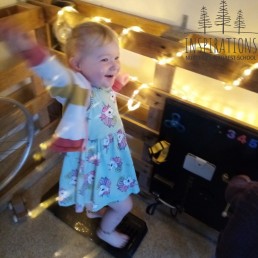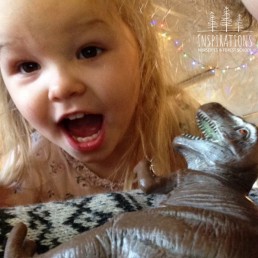Being Two- What are Schemas?
Welcome to part two of our focus on Being Two. This week we take a look at schemas, what they are, how our toddler room supports them, and ways to support this at home.
Have you made a cup of tea today, switched a light on, picked a pen off the floor and moved it to a flat surface to avoid it rolling off again? Then you have used schemas today without even realising it.
 A schema, put simply is like a mental model, a set of instructions we act out in our brain based on what has been successful in the the past. Whilst we come across schemas every time we learn something brand new, as you can imagine this happens the most at 2 and 3 years old.
A schema, put simply is like a mental model, a set of instructions we act out in our brain based on what has been successful in the the past. Whilst we come across schemas every time we learn something brand new, as you can imagine this happens the most at 2 and 3 years old.
Our toddler room is a HUB of schemas and is filled with opportunities to create these brain connections.
If I hit this will it break?
Whilst in may appear our little ones are rampaging through rooms causing chaos perhaps it helps to change our perspective and remember they are simply creating cognitive blue prints that set them up for life.
What happens if i drop this? Does this bounce? If I hit this will it break?
The Main Types of Schemas
Below are some examples of Schemas and how they are supported within the provision:
- Transporting – Moving objects or themselves from place to place. Moving things
with their hands. Bags, pots, pans, containers, sad. - Rotation – Turn and rotate objects or themselves. Roll their bodies, playing with toys
that spin, twist, and turn or even ride bikes. They could use Tyres, Wheels, Cable
reels and cars to explore this interest. - Enclosing – Join lines or build structures with objects such as bricks, magnets, or
malleable materials to form enclosures/models. - Connecting – Joining things together, fastening or tying things. Separating or
disconnecting construction etc. - Positioning- Our loose parts ethos lends its self well to this schema, lining things up, ordering different sized objects.
- Enclosing or enveloping- There is always a large cardboard box on the go in our toddler room setting for the children to climb into. But this can also be seen with sand or soil or fabric.
- Transforming- Messy play- gloop, water trays, mark making



I have attached a link that details further Schemas and how you at home can support these at home.
http://www.flyingstart.uk.com/wp-content/uploads/2014/08/Schema.pdf

Being Two
This Month we are focusing on our middle room at nursery, the toddler room, also known as our Honeybees room. Being two is more commonly referred to as the ‘Dreaded Twos’ or ‘Terrible Twos’; a term we find very unjust and instead celebrate this age with the phrase ‘Terrific Twos'.
Terrific Twos
It is very easy to conclude that your Toddler is in the midst of the ‘Terrible two’s’ when they act up and try push your buttons, especially when you are faced with patience testing tantrums.
It is important to remember that they are experiencing so many emotions and ultimately navigating their way into becoming tiny humans. They do not mean to drive you to the bottle of wine sat in your fridge, they are just growing and learning whilst showing you who they are and that being two really is terrific.
Adventure and Independence
In our eyes being a two year-old is about adventure and independence, traits we
feel are continuing to shape them after the transition from Baby to Toddler.

The Toddler room, or the Honeybee’s room as we refer to it is set up to allow the above,
and is a large area both indoors and out to move around freely, with many areas of
provision to explore and investigate. Whilst these areas are being slowly destroyed by tiny
hands and feet, friendships are being formed, and language is continuing to develop by
using simple sentences to share feelings, experiences and thoughts. They become more
aware of others feelings, and they are starting to understand boundaries and routines, as
well as listening with interest and understanding simple questions.
Milestones - Potty Training
Being Two also comes with it's challenges and a certain milestone is often met during this
period of their lives… Potty Training! Early signs that they may be transitioning
to this stage include awareness and communication. From telling you that they have done
something in their nappy to expressing the urge to go, these are all clear indictors that the
time is right and you should go with it and know that we are always their to support you. Remember that children develop at their own pace and they may not be ready to be potty trained until later.

Here are some links to books and tips for support-
https://www.amazon.co.uk/s?k=potty+training+books+for+toddlers&crid=BLJ3UFJL3K9O&sprefix=potty+training+%2Caps%2C192&ref=nb_sb_ss_ts-doa-p_3_15


Children are not things to be moulded, but people to be unfolded- Jess Lair
Next week we will focus on the importance of schemas, with some tips to supporting young children's language development. In the meantime if you've had a tough day, you've passed bath time and skipped straight to bedtime, you're still doing a great job. Remember it is this age that children are making new connections in their brain, pushing boundaries and learning vocabulary at rapid speed. We have to give credit to them for all this multitasking, whilst keeping our silliness alive, reigniting our imagination, and providing daily entertainment.
Although there can be some hard times amongst the great times if we start to see the world through their perspective we might all agree that life as a toddler can be challenging but also very fun.
-Ashleigh



